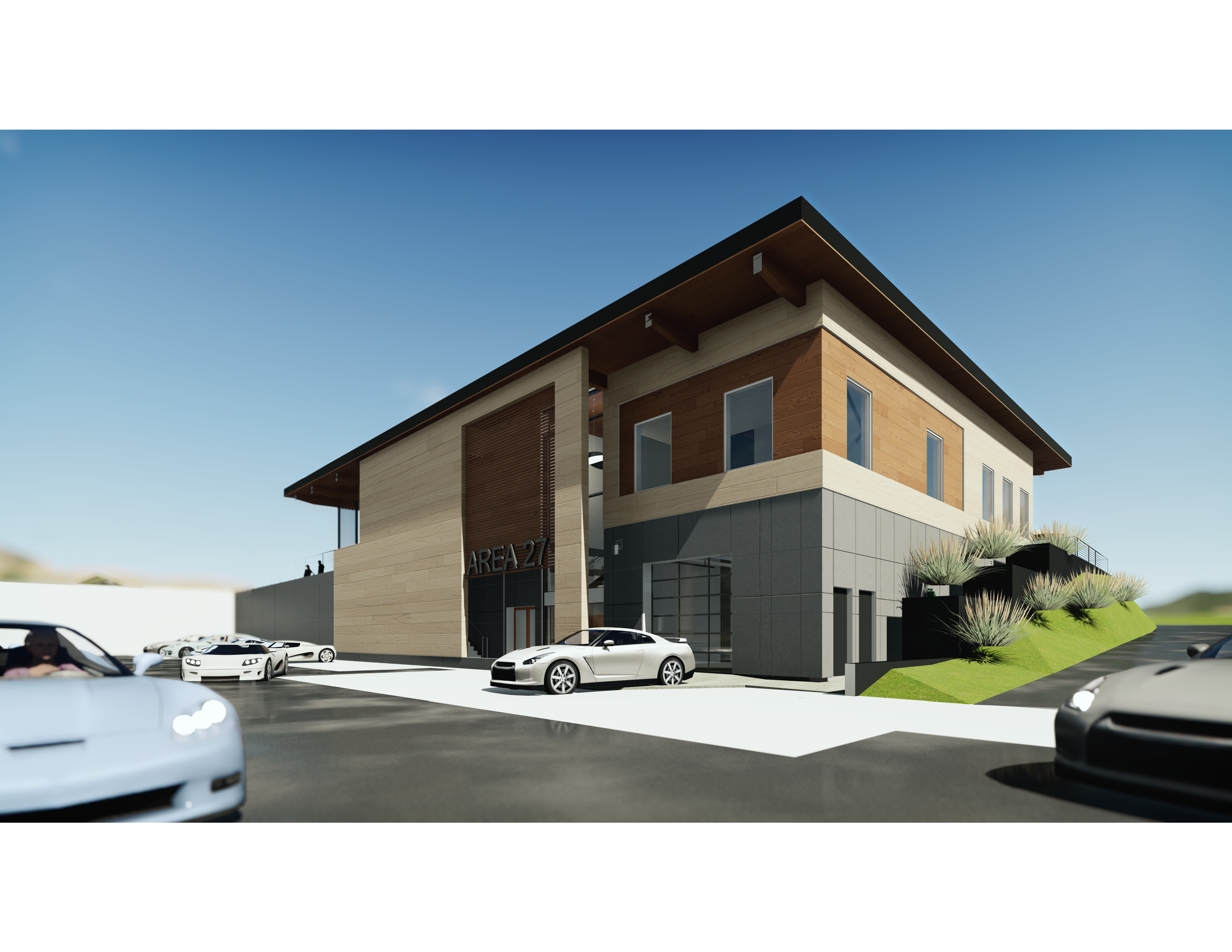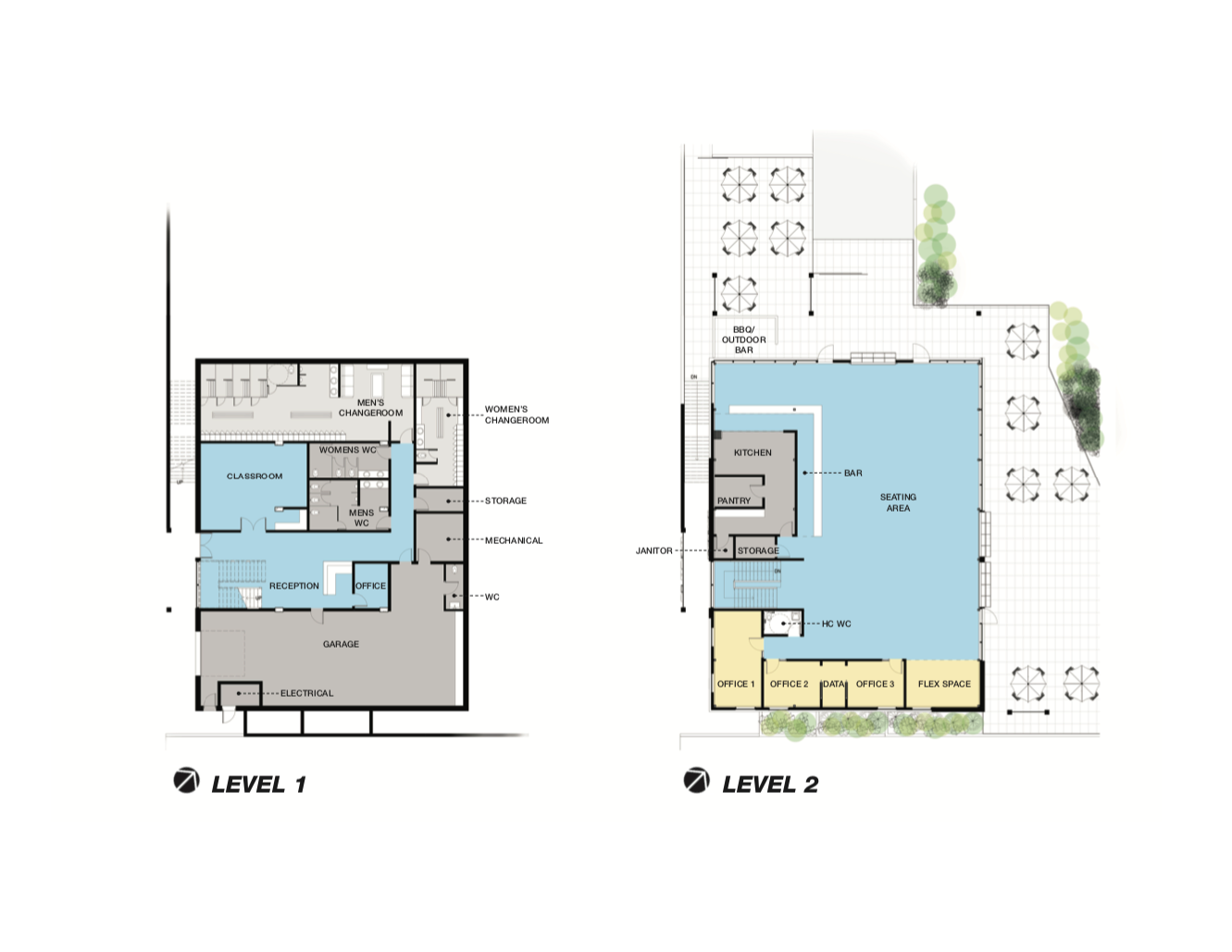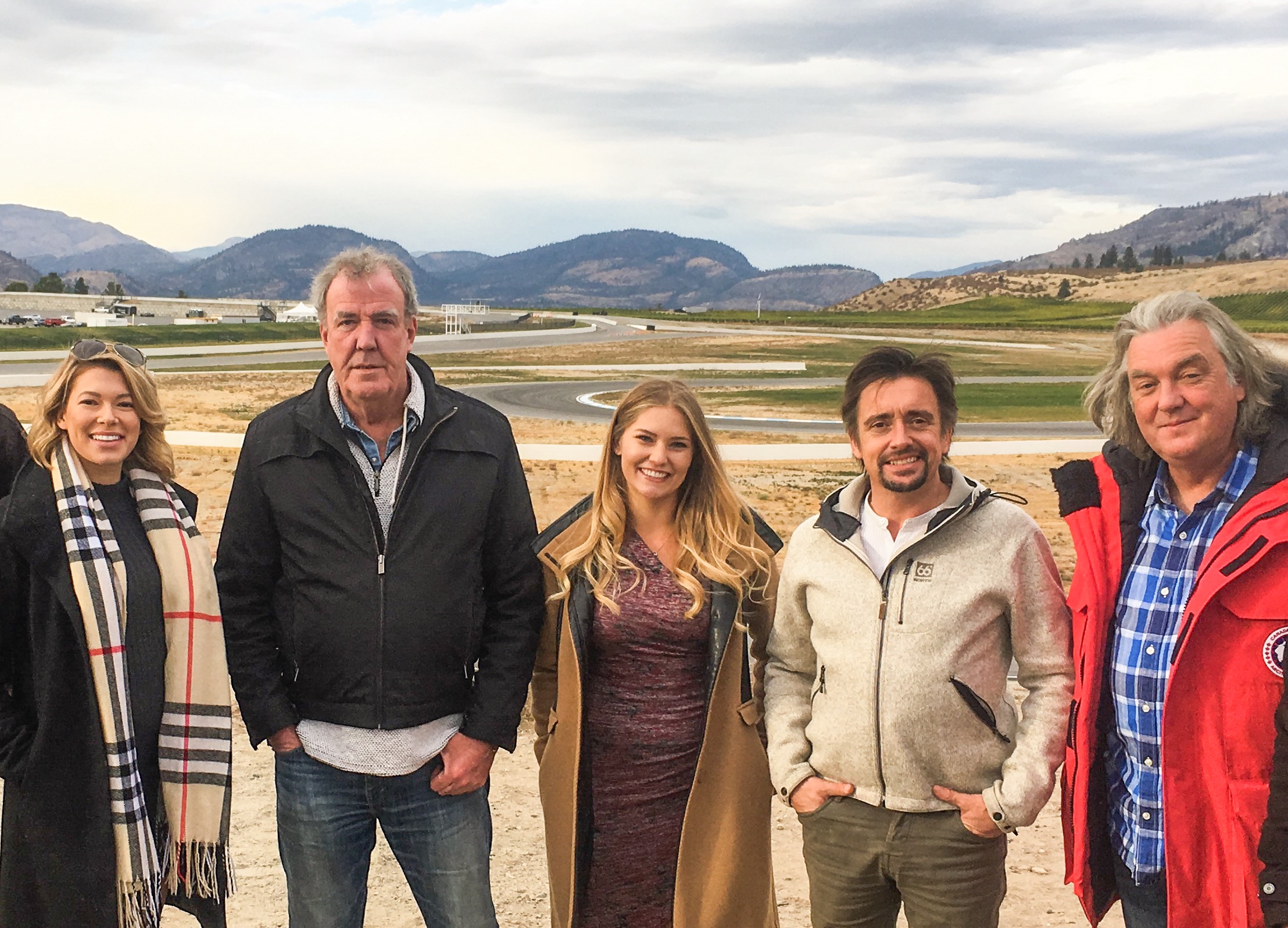
August 16/18 – The Crew Chief’s Corner Chapter 1: Brakes
Properly functioning brakes are the most important component on your track car, closely followed by steering. A failed braking system is often responsible for the highest amounts of damage that we see at race tracks, not to mention, severity of injuries. With this in mind let’s look at the various components of the braking system so that we can better insure that they remain in good working order.
Rotors
Rotors come in either steel or carbon ceramic, solid or vented, with various styles including plain finish, slotted, and drilled. During extreme braking, friction materials (brake pads), can release gasses that require a pathway to escape. Without this path the brake pad can momentarily hover over the rotor surface reducing the coefficient of friction thereby reducing braking efficiency. Slots and drilled holes can accomplish the removal of gas, however there are pros and cons to each approach. Slots work by providing a channel for the gas to escape which in turn allows the friction material to stay in contact with the rotor. The draw back to slots is that they can become a pathway for cracks to follow because they act as a stress riser, similar to the scoring of a glass or a ceramic. Manufacturers have minimized this by both curving the slot and making the bottom of the slot U-shaped, as opposed to V-shaped.
Drilled holes work slightly different in that they can allow air to flow from the inside of the rotor in the case of a vented rotor. On the plus side these holes can allow for bi- directional movement of air which in theory provides better cooling and can also contribute to a lighter overall rotor. The down side of holes are reduced surface area of the rotor, increased noise when braking, and they tend to develop small surface cracks radiating from the holes due to uneven temperatures caused by either hot gasses or cool air.
Excessive heat is always going to be the enemy of a properly functioning brake system. Adding duct work and fresh cool air to the brakes will help to mitigate this issue. Also selecting wheels that allow and promote adequate airflow around and through the rotors should be considered to improve braking. Additionally, the weight and size of the rim, and tire combination can combine gyroscopically, to either improve or diminish braking efficiency.
A larger rotor has greater leverage when it comes to slowing the wheels down. Given that the same size caliper and brake pads are used, a larger diameter brake rotor will always work more effectively than a smaller one.
Pads
Brake pads come in several compounds and material composition: organic, metallic, semi-metallic, ferro carbon, and carbon. Compounds are chosen based on expected use and operating temperature. Pads that work well at higher temperatures on the track may not work very well at all with cooler temperatures while street driving. Conversely, a brake pad that is optimized for the street may overheat and disintegrate causing a catastrophic failure on the track. It’s extremely important to select a brake pad with an operating range suitable for its intended use.
It is essential to bed in brake pads properly prior to use on the track to prevent brake failure and provide consistent and reliable performance. Heat must build up gradually and work slowly through the brake pad, this will allow the bonding agents in the pad time to cure thoroughly all the way through the pad. It is important not to overheat the surface of the pad by braking too hard too soon. This will glaze the surface of the pad and will adversely diminish the friction coefficient, or brake torque. A glazed brake pad surface may also have an uncured compound under the surface which will lead to a complete brake pad failure or disintegration of the friction material.
Whenever a new compound or brand of pad is being bed in, the rotors must be either new or have been machined. This allows the pads own friction material to embed itself into the steel of the rotor. This will enhance the overall brake torque, as the rotor will now have enhanced friction and will work better with the brake pad. Occasionally a mismatched rotor alloy and brake pad compound can result in a poor bed in process resulting in a glazed rotor. This will give the feel of a firm pedal coupled with a lack of brake torque. The brakes will not feel linear, you will press harder but the amount of slowing down will not seem equal of the effort. Rotors will require machining and a different set of pads should be chosen and will require a repeat of the bed in procedure.
A final note for all brake pad types is that it is better to change the pads if possible while there is still at least 30% of the material remaining. This will prolong the life of the rotors which are often far more expensive than the pads are. In certain racing circumstances this is not possible as the pads and rotors may end up wearing out together with the rotors exhibiting surface cracks as the pads are near worn to the backing plates. Also, if expensive rotors are a concern, try to avoid using overly aggressive brake pads as they can cause premature rotor wear, grooving, and cracking. Often having better cooling duct work will allow for less extreme and aggressive pads to be used this prolonging rotor life.
Brake Hoses
Production cars are primarily equipped with rubber brake hoses that do a great job for their duties on the public roadways. Modern sports cars feature new low expansion hoses that provide a firmer performance brake pedal feel. The inside of rubber brake hoses will expand slightly during hard braking resulting in a softer and lower brake pedal feel. This has the effect of dampening (reducing) brake feel thereby providing less communication to the driver. During extreme braking conditions that produce higher operating temperatures, and higher line pressures, rubber brake hoses have a corresponding higher instance of failure. This will result in a complete loss of brakes on either the front or rear axle.
Braided stainless steel brake hoses may be fitted in place of rubber to combat the above-mentioned issues. When opting for a set of braided brake hoses it is important to buy the best available, often the best lines will come with a DOT approval. Things to look for in a good replacement hose are features like, factory matching banjos and mountings, coatings over the stainless braiding, a published line pressure burst rating, and a well know brand name. When installing braided brake hoses, it is advisable to compare the new hose to the original equipment hose. Compare overall length, fittings and mounted orientation for any discrepancies. Braided lines must be installed without preloading, twisting or pinching at any point of suspension angle and steering angle. All brake hoses, whether rubber or braided, must never be pulled on or subjected to holding the weight of the brake caliper or suspension tension. Failure may result from improper installation or care.
Once installed braided brake hoses should be periodically inspected for signs of abrasion, fraying and potential leakage. It is important to note that braided brake hoses do not last as long as rubber hoses for everyday street driving. Over time the stainless braiding will eventually fray in a location, this will allow the inner tube (usually Teflon) to expand and puncture. This is the primary reason manufacturers do not equip vehicles for sale with stainless braided hoses. Most motorists find the dampening associated with rubber hoses to be preferable for everyday street driving as well.
Brake Fluid
At a recent drivers’ meeting I asked the following question, “can anyone tell me the minimum wet boiling temperature (in Celsius) of the brake fluid they are using in their vehicles?” One member knew the advertised dry boiling point (in Fahrenheit) of his brake fluid, but nobody seemed to know what I was referring to. Why does brake fluid have a wet and dry boiling point rating and what does this mean? DOT 3 & 4 brake fluids are hygroscopic by nature, meaning they pull in moisture from the atmosphere. The wet boiling point refers to the temperature the fluid boil in the caliper with 3.7% water by volume mixed with the brake fluid. The dry boiling point is the temperature the fluid will boil when it is in brand new condition. If you are running a race team and install new brake fluid before every race weekend or test day then you only need to pay attention to the dry boiling point. If you drive your car daily and do not change brake fluid frequently then you should pay attention to the wet boiling point.
Another consideration for cars equipped with ABS braking systems is the viscosity rating of the brake fluid. ABS brake systems may not operate correctly if the recommended viscosity is exceeded. This can result in an unexpected brake failure or improperly operating antilock brakes. Many of the high-performance DOT 4 brake fluids exceed the viscosity rating for ABS braking systems and should not be used. Therefore, many high- performance vehicles will still feature DOT 3 fluids as the factory fill. Enter DOT 5.1 semisynthetic brake fluid. This fluid features both higher wet and dry boiling temperatures than typical DOT 4 fluids but with a viscosity that is optimized for ABS systems. The DOT 5.1 fluid is also slightly less hygroscopic due to the semi synthetic composition. Always follow the recommendations of the vehicle manufacturer when it comes to brake fluid and make sure any aftermarket brake fluid is fully compatible in all specified areas with the original equipment fluid.
Never under any circumstances confuse DOT 5 with DOT 5.1 brake fluid and never ever use DOT 5 fluid in a performance braking application. DOT 5 is a silicone-based brake fluid and is compressible which provides a spongy brake pedal. This type of fluid is only used in military, farm, and antique vehicles that may sit for long periods between use. The silicone fluid is not hygroscopic and is suitable for storage purposes. Never use this on a race track!
Bleeding the Brakes
If you decide to change your brake fluid and/or have your brake fluid bled it is extremely important to have this procedure done properly. That is to say that over 95% of the mechanics out there do not do it correctly for a tracked vehicle. There are 3 objectives that must be met when changing fluid;
- All of the old fluid must be removed.
- Try not to mix the old and the new brake fluids together.
- Make sure there is no air remaining in the system whatsoever.
To accomplish this the master cylinder reservoir must be as nearly emptied as possible without having the master cylinder suck any air in on the replenishing (up stroke) movement of the brake pedal. Use a clear vinyl hose into a clear bleeder bottle on the farthest away wheel from the master cylinder. This will allow you to monitor the condition of the brake fluid as it exits the caliper. This is the key starting point so it’s very important to be paying close attention when attempting this. Once the reservoir is nearly emptied it may be topped up with the new fluid.
Go back to the farthest away wheel and if the caliper has two bleeder nipples then begin with the inner one. With the clear vinyl hose attached open the bleeder about a quarter turn, brake fluid should slowly begin to appear in the hose. Pump the brake pedal about five times (slowly and smoothly) then top up the master cylinder making note of the fluid level change. Repeat with five more pumps and another top up. The fluid exiting the brake caliper should be crystal clear when visible in the clear hose. You may now move to the outer bleeder nipple and now do only 3 pumps of the brake pedal. Repeat this process for the remaining three wheels while always remembering to check and top up the master cylinder. If the master cylinder somehow ingests air, and pumps this air to the ABS module, you will be spending a long time trying to remove this air, and it may require a specialized diagnostic tool that only the dealer will likely have. Be careful here!
Now that you have done all four wheels go back to where you started with the farthest away wheel. This time have a clean and emptied bleeder bottle. Top up the master cylinder and re-bleed all four wheels by doing only 1 and a half pumps per bleeder nipple. Pull vertically ever so slightly on the bleeder hose, this will stop the emergence of tiny bubbles in the exiting brake fluid, you can now tighten the bleeder nipple. Once all four corners are completed, double check that all bleeder nipples are snug, the dust caps are replaced, and the master cylinder reservoir level is correctly set. The fluid in the bleeder bottle should be as clear as the fluid coming from the new brake fluid bottles.
Sitting in the drivers’ seat you can now test the firmness of the brake pedal. With the engine off press the pedal a couple times and hold, the pedal should be immediately firm as soon as the mechanical slack is taken up. On most cars this will be within the first 1/8 inch of pedal travel. If the pedal is firm you have successfully completed your brake fluid change and you should be good to go for the track. It is also a good idea to apply a fair amount of pressure simulating hard braking on the track after a fluid change. You can inspect brake lines and fittings for any signs of leaks or damage. It’s better to burst a worn-out line in the shop than out on the track.
The Hot Set Up
Be aware of the so called ‘hot set-up’, what worked on one car may be a complete disaster on another car. When finding out what will work best with your vehicle it is important to do your research and make only one change at a time while making note of how each change affects overall performance. Never assume that because it worked on one car it will work on the next, especially if there is a difference between cars that may not be accounted for.
A good place to start is knowing what you have to begin with. How much info do you have on the brake fluid in your vehicle? When was it installed? Does the mechanic have experience preparing track vehicles? What are the specifications of compatibility for an upgraded brake fluid?
Once you have built your data base and understanding of brake fluid for your car you can do the same for brake pads, brake hoses, and brake rotors. Remember to make notes and only change one thing at a time then make more notes on the results. As manufacturers build and test more track-oriented vehicles it becomes more difficult to improve upon the original equipment performance. Just remember that every improvement usually comes with a corresponding cost, more maintenance, noise, dust, shorter service life, etc. Any change needs to be thoroughly researched and properly installed.
Brakes must work, failure is not an option.
Bill Drossos
SOMC President, Licensed Canadian Red Seal Technician Former Race Mechanic, Engine Builder
August 6/18 – MEDIA RELEASE: Next Phase for Area 27, Administrative Services Building to Begin Construction
Oliver BC – Area 27 Motorsports Park has officially started the next phase of construction. Plans have been finalized for the first of several buildings at the facility. The 11,000 sq.ft. multipurpose building is set to commence construction over the next few weeks, with the 10-month project being fully functional in 2019.
The Administrative Services building will feature over 3,000 sq.ft. of event space overlooking the circuit, including on-site food and beverage services. The building will also provide a state of the art classroom for the Academy 27 programs and private coaching from Academy 27 instructors. Over the next two years Area 27 expects to also complete a refuelling station, karting facility, on-site storage & paddock garage facilities.



February 8/18 – Big News:The Grand Tour at Area 27
This past October Area 27 was host to Jeremy Clarkson, Richard Hammond and James May for the season 2 filming of episode 10 of The Grand Tour. We wanted to tell you, but they made us sign a piece of paper saying we wouldn’t!! Formerly known for their antics on Top Gear, this trio has travelled the globe with their entertaining antics behind the wheel.
During this special episode of The Grand Tour, the gents test their skills driving SUVs around Area 27’s many challenging corners. James May (Captain Slow) told Bill he thought he made it through corner 7 correctly…once. This hilarious episode airs tomorrow evening, February 9th, on Amazon Prime but be sure to check out the trailer below today!
